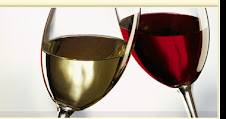 Haras de Pirque's name honors the country's oldest thoroughbred breeding stud , founded in 1892. In 1991 , after a highly successful business career in Chile's private sector , entrepreneur Eduardo Matte acquired an estate that he would later name Haras de Pirque , in the southwestern part of Pirque , a prestigious winegrowing area situated in the Maipo Valley. Eduardo Matte's objectives included launching a major winery project , and expanding and improving the exising.
Haras de Pirque's name honors the country's oldest thoroughbred breeding stud , founded in 1892. In 1991 , after a highly successful business career in Chile's private sector , entrepreneur Eduardo Matte acquired an estate that he would later name Haras de Pirque , in the southwestern part of Pirque , a prestigious winegrowing area situated in the Maipo Valley. Eduardo Matte's objectives included launching a major winery project , and expanding and improving the exising.This property today covering 600 hectares , gently ascends the lower slopes of a spur of the Andes Mountains. In these foothills , between 1992 and 1993 , one hundred and twenty hectares of vineyards were planted , mainly with the reds Cabernet Sauvignon , Merlot and Carmenere , and the whites , Chardonnay and Sauvignon Blanc.
Along with wine-growing and thoroughbred raising , Eduardo Matte gives free rein to his other passions , one of which is the collection of old carriage , all drawn by suitably bred horses. The collection cirrently features 18 models with a stable of 30 horses that , together with four thoroughbred stallions and nearly two hundred mares and foals , trot and gallop through Haras de Pirque's wide , green pastures.

Vina Haras de Pirque features a uniquely designed , Horse-shoe shaped winery , the Only one of its kind in the world. Build on the side of a hill , the 5300 square meter , 1.5 million liter production capacity structure dominates and is a tribute to both the estate's vineyards and the thoroughbred farm. The inner sloping floors allow the force of gravity to slowly , gently move the musts and wines , thereby obviating the need for pumps and other kinds of tranfer systems. This substantially reduces the potential for oxidation and the loss of the wine's organoleptic characteristics.
The Horse-shoe shaped estate now operates both as equesteian centre and state-of-the-art winery ( the influence of the Matte family's Chilean thoroughbreds can be seen in the 'Equus' range ). Quality has always been high. This has resulted in a flagship wine called 'Albis' , a blend of Cabernet Sauvignon and Carmenere , spearheaded by oenologists Renzo Cotarella ( of Antinori ) , Cecilia Guzman ( of Haras de Pirque ) and their consultant winemaker , Alvaro Espinoza.
Below was some example of wines from their signature ranges , 'Equus' , 'Character' , and 'Elegance' .
Grape Variety : 100% Sauvignon Blanc
Flavor : Bright intense greenish-yellow color. Lovely notes of citrus peel and mineral notes with a persistant aroma character of fresh green apples. The wine was full and fresh , nice balance in acidity reflects all the mineral and herbal character of this wine. Persistent and elegant at the end.
Cabernet Sauvignon 2004
Grape Variety : 100% Cabernet Sauvignon
Flavor : Character Cabernet Sauvignon 2004 has excellent fruit concentration , ripe black berries and dried fruits in the mouth combined with a complex and elegant attack. This wine presents a spicy final with toffee and chocolate being a great perfomer of Upper Maipo Valley. Drink from now until 2012.
Grape Variety : 100% Sauvignon Blanc
Flavor : Its has a color of bright greenish-yellow. Intense grapefruit nose , subtle mineral notes with inderlying typical grassy aroma character. The flavor was fresh and young , crispy. Lively and balanced. Presents mineral and citrus finish , quite elegant and fine. So had to drink now.
Cabernet Sauvignon 2005
Grape Variety : 85% Cabernet Sauvignon , 9% Syrah , 3% Marlot , 3% Cabernet Franc
Grape Variety : 100% Chardonnay
Flavor : Beautiful pale gold , brilliant and limpid. The wine was young and fresh , rich in flavours of citrus and melon and temperate fruits. The long finish prolongs the pleasure with a pronouced mineral presence enhanced by a delicate hint of wood. Good. Drink now.
Carmenere 2006
Grape Variety : 85% Carmenere , 15% Cabernet Sauvignon
 Vina Haras de Pirque - 'Albis'
Vina Haras de Pirque - 'Albis'Albis 2003
Grape Variety : 73% Cabernet Sauvignon , 27% Carmenere
Flavor : The 2003 vintage in Upper Maipo Valley had excellent weather conditions during early summer and harvest. Deep red in colour. And the flavor layers of mint and chocolate , with a persistent hint of cherries. Very complex , ripe , deep and sweet tannins. Concentrated and velvety in mouth feel. Opulent fruit and spicy ending. Best for your collection.
Thanks
Wingcent
wingcent@singnet.com.sg






























































